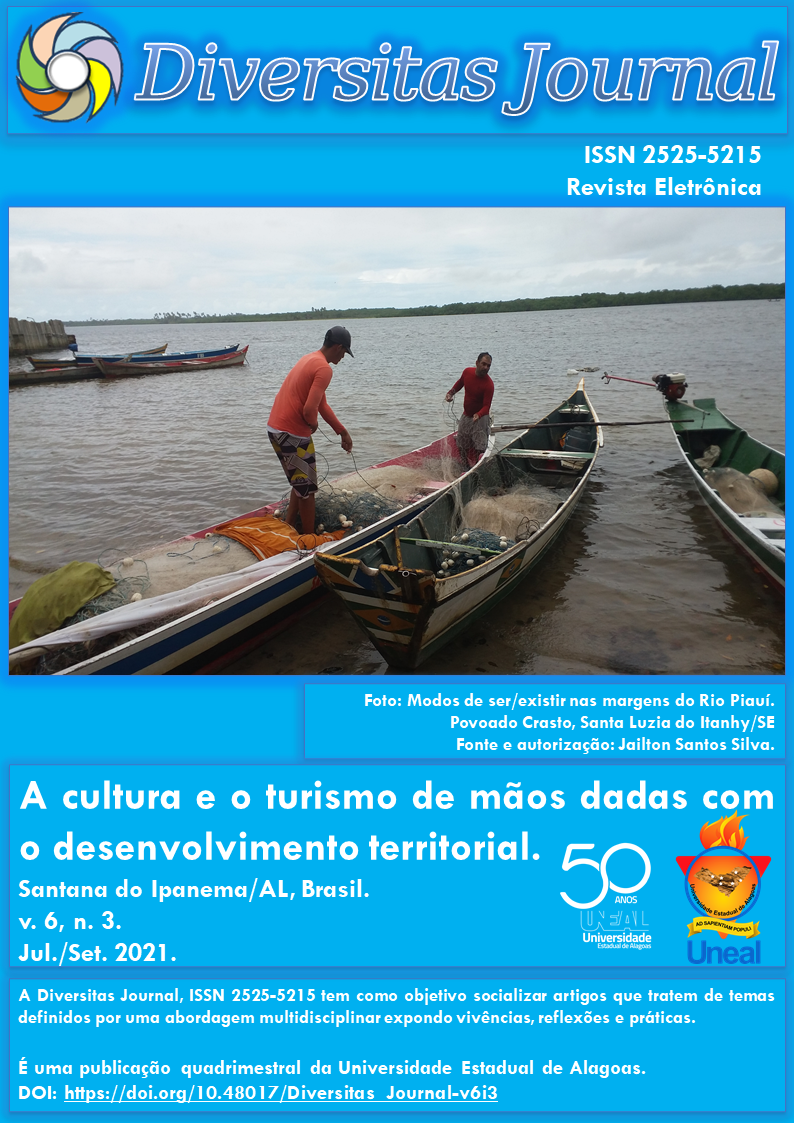Mortality rate of newly hatched larvae of Nile tilapia (Oreochromis niloticus) submitted to different photoperiods
DOI:
https://doi.org/10.48017/Diversitas_Journal-v6i3-1769Abstract
ABSTRACT: Fish farming is a growing area in the aquaculture industry. Brazil is among the five largest tilapia producers in the world, with a production of 283 thousand tons in 2017. Tilapia has been intensively cultivated and improved through more efficient cultivation techniques. In this sense, the objective was to evaluate the mortality rate of newly hatched larvae of Nile tilapia reared three photoperiods (12Light:12Dark, 18L:06D, and 24L:0D) during 9 days of cultivation. For this purpose, a recirculation system with 9 water tanks was set up, with 3 boxes per group containing 930L of freshwater. After the embryos hatched, the larvae were transferred to nurseries (2 trays per tank, n = 64 larvae/tray), with 384 larvae per photoperiod. Water quality parameters were monitored and remained in the ideal ranges between treatments. However, temperature (p=0.004) and pH values (p= 0.009) for the 18L:06D photoperiod were lower than those observed for the 24L:0D photoperiod. A high mortality rate was observed in the first days of culture, specifically on the second day, for all photoperiods. However, there was a decrease in mortality throughout the experiment, with little variation in the mortality rate for the remainder of the experiment. In this context, it appears that the influence of the photoperiod on the survival of the fish seems to be related to the age of the animal.
KEYWORDS: Tilapia farming, Survival, Light stimulation.
Metrics
Downloads
Published
How to Cite
Issue
Section
License
Copyright (c) 2021 Márcia Dantas dos Santos, Bernadete de Oliveira Costa, Jucilene Pereira de Sousa, Neila Lidiany Ribeiro, Marino Eugênio de Almeida Neto, Ian Porto Gurgel do Amaral

This work is licensed under a Creative Commons Attribution 4.0 International License.
The Diversitas Journal expresses that the articles are the sole responsibility of the Authors, who are familiar with Brazilian and international legislation.
Articles are peer-reviewed and care should be taken to warn of the possible incidence of plagiarism. However, plagiarism is an indisputable action by the authors.
The violation of copyright is a crime, provided for in article 184 of the Brazilian Penal Code: “Art. 184 Violating copyright and related rights: Penalty - detention, from 3 (three) months to 1 (one) year, or fine. § 1 If the violation consists of total or partial reproduction, for the purpose of direct or indirect profit, by any means or process, of intellectual work, interpretation, performance or phonogram, without the express authorization of the author, the performer, the producer , as the case may be, or whoever represents them: Penalty - imprisonment, from 2 (two) to 4 (four) years, and a fine. ”


















